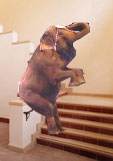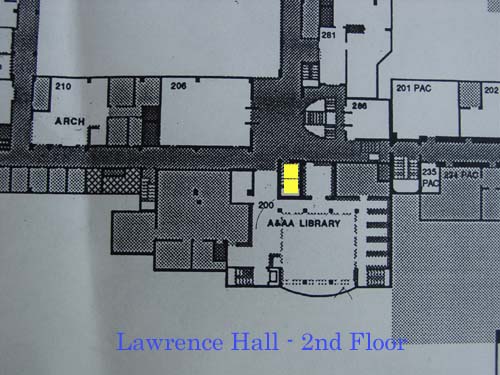

INTRODUCTION
Our study deals with the building in which we spend most of our time: Lawrence Hall. It is common for students and faculty to complain about thermal discomfort depending upon their location within the building. The areas that seem to have some of the most significant temperature disparaties are the major staircases that allow circulation throughout the building. While there are many stairwells within Lawrence Hall, we have decided to examine the completely enclosed stairwell located next to the library near the southeast corner of the building. Much like the rest of the building, the stairwell is built of reinforced concrete. When looking at the history of this space, we discovered that it was constructed as a part of the 1970's addition and originally was an exterior facing stairwell. A subsequent addition in 1988 changed the space, leaving it entirely enclosed within the building. While the thermal conditions of the space were obviously affected by this alteration, the air conditioning distribution into the area was not. As a result, it is common for this part of the building to have extreme thermal conditions. In the summer, many found it to be extremely cold, while in these winter months, a frequent complaint is that the space is unusually hot.

We hope to compare the conditions within this circulation space to that of the natural outside conditions and correlate these temperatures with the average activity level that occurs within the stairwell. We will use the tables found in the Mechanical and Electrical Equipment for Buildings textbook as well as the data we have gathered to discover how well these spaces address the relationships among optimal operative temperature, clothing, and activity.